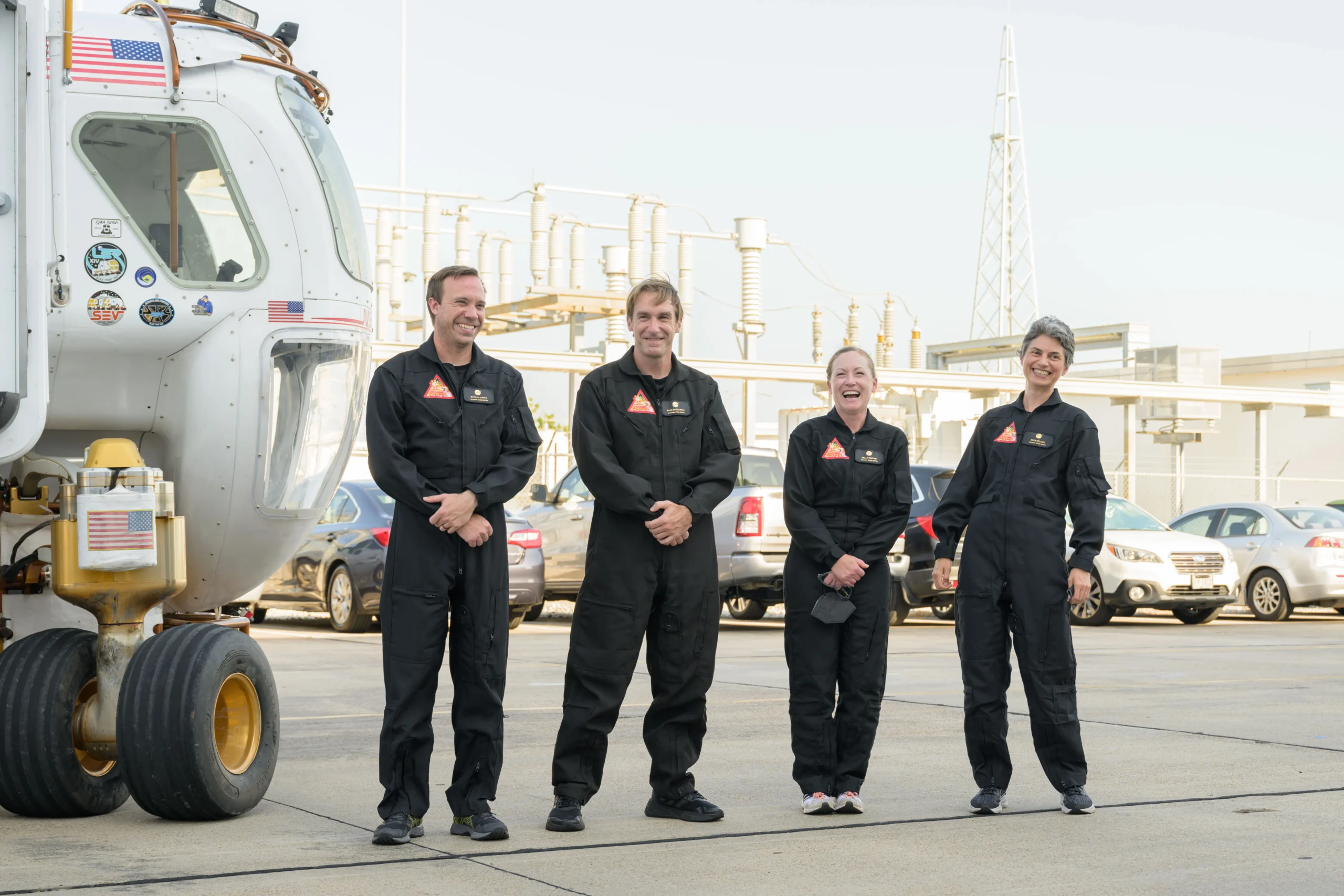Who needs a road trip when you can join NASA on a year-long Martian staycation? Once again, NASA’s making it (almost) possible to spend your days on Mars, inviting applicants to its next simulated yearlong Mars mission under the Crew Health and Performance Exploration Analog (CHAPEA) program. Scheduled to start in spring 2025, this initiative is a step to prepare for humanity’s first journey to the Red Planet, which is projected to occur in the 2030s as part of NASA’s Artemis program.
This isn’t NASA’s first attempt at simulating life on Mars. This mission is the second of three planned as part of CHAPEA. The first four mission volunteer participants entered the ground-based Mars habitat at NASA’s Johnson Space Center in Houston, Texas, on June 25, 2023, to begin a 378-day mission. Crew members include biomedical scientist Kelly Haston, aeronautics engineer Ross Brockwell, emergency medicine physician Nathan Jones, and navy medicine microbiologist Anca Selariu.

The CHAPEA mission one crew (from left): Nathan Jones, Ross Brockwell, Kelly Haston, and Anca Selariu exit a prototype of a pressurized rover and make their way to the CHAPEA facility ahead of their entry into the habitat on June 25, 2023. Image courtesy of NASA/Josh Valcarcel.
Leap into the Future
Each CHAPEA program consists of three ground-based missions designed to simulate the living and working conditions on Mars. Volunteers inhabit a 1,700-square-foot, 3D printed habitat called the Mars Dune Alpha at NASA’s Johnson Space Center. Created from ICON’s innovative Vulcan construction system and proprietary lavacrete material, this habitat is an ideal example of what future Martian homes could look like.
In collaboration with architecture firm BIG-Bjarke Ingels Group, which is based in Copenhagen, Barcelona, New York, and London, ICON fitted the space with private crew quarters, a kitchen, and dedicated areas for medical, recreation, fitness, work, and crop growth activities, as well as a technical work area and two bathrooms.
Mars Dune Alpha is engineered to imitate the harsh conditions of Mars, introducing the crew to the realities astronauts would face, including scarce resources, equipment malfunctions, communication delays, and other environmental stressors. Moreover, since Mars has about a third of Earth’s gravity, it will present unique challenges for eventual human missions. To that end, the agency has created a 1,200-square-foot “sandbox” portion filled with red sand to simulate the Martian landscape and contains equipment such as a treadmill for the virtual reality walks. The simulated challenges, like spacewalks, robotic operations, and habitat maintenance, are all crucial training to prepare for any unforeseen challenges of deep space exploration.
Who Can Join?
NASA’s second CHAPEA call is open to “healthy, motivated U.S. citizens or permanent residents aged 30-55, proficient in English for effective communication between crewmates and mission control.” The selection criteria are rigorous, much like the standards for astronaut candidates, including a master’s degree in a STEM (science, technology, engineering, and mathematics) field and relevant professional experience. NASA says compensation for participating in the mission is available. However, that information has not yet been provided.
A Step on a Longer Journey
The CHAPEA missions and the Mars Dune Alpha habitat are critical parts of NASA’s vision for space exploration, including the Artemis campaign to establish a sustainable human presence on the Moon before Mars exploration. The lessons from these missions are expected to help the agency develop life support systems and habitat designs and aid in the psychological and physical care of astronauts during long-duration space exploration, helping address everything from radiation protection to crop growth in alien soil.
By bridging the gap between our current capabilities and any interplanetary ambitions, missions like CHAPEA lay the groundwork for a future where humans live and work in off-Earth environments. Although an actual mission is more than a decade away, collaborations like this one between NASA, ICON, and BIG highlight how advanced manufacturing, architecture, and space science can aid in tackling the challenges of space exploration. Perhaps this type of collaborative spirit and innovative thinking will allow humanity to thrive on another planet.
Any applicants ready to help chart the course for human exploration on the Red Planet can apply to the CHAPEA program here. The deadline to apply is April 2, 2024.
Subscribe to Our Email Newsletter
Stay up-to-date on all the latest news from the 3D printing industry and receive information and offers from third party vendors.
You May Also Like
Further Understanding of 3D Printing Design at ADDITIV Design World
ADDITIV is back once again! This time, the virtual platform for additive manufacturing will be holding the first-ever edition of ADDITIV Design World on May 23rd from 9:00 AM –...
3D Printer Maker EVO-tech Reborn as NEVO3D — Once More With Feeling
EVO-tech was a 3D printing service and original equipment manufacturer established in 2013 and based in Schörfling am Attersee, Austria. The company produced high-quality material extrusion systems featuring linear bearings,...
3D Systems Brings 3D Printed PEEK Cranial Implant to the U.S. with FDA Clearance
For more than 10 years, 3D Systems (NYSE:DDD) has worked hand-in-hand with surgeons to plan over 150,000 patient-specific cases, and develop more than two million instruments and implants from its...
CDFAM Returns to Berlin for Second Annual Symposium
The second CDFAM Computational Design Symposium is scheduled for May 7-8, 2024, in Berlin, and will convene leading experts in computational design across all scales. Building upon the first event...































